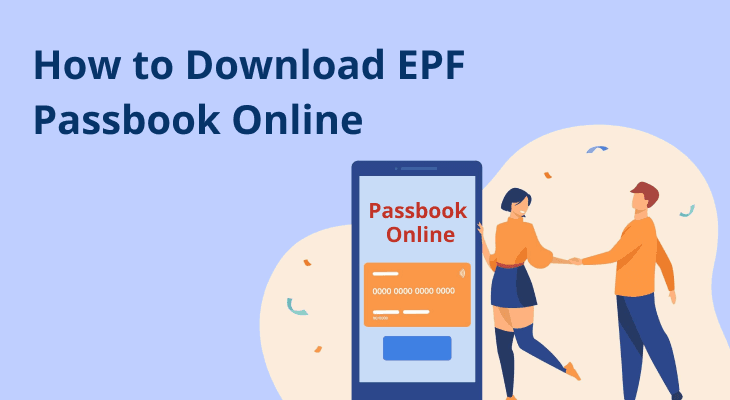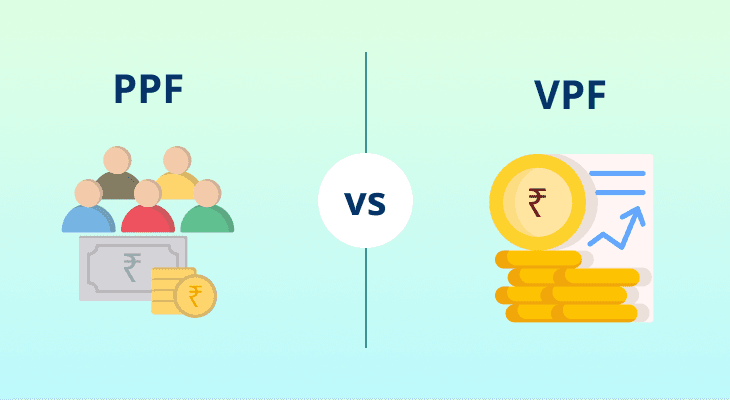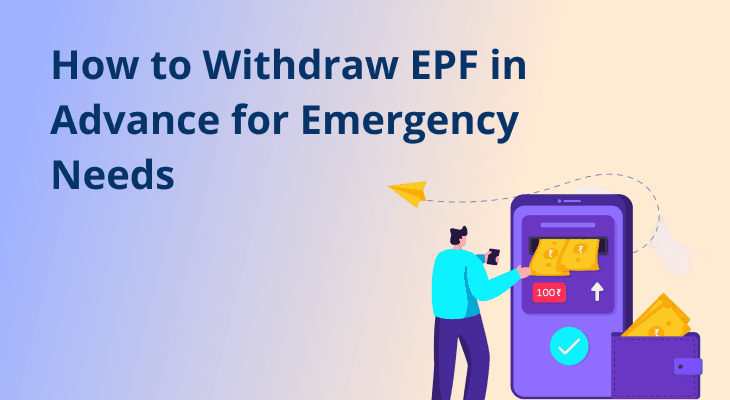
How to Download EPF Passbook Online?
Tracking your retirement corpus is crucial as you invest funds into it over the years. EPF being a popular vehicle for building this sum, the EPF passbook is a key record to track the progress of your retirement goals. This digital ledger shows every monthly deposit (yours and your employer’s) along with the interest your balance earns. With it, you can confirm that each contribution lands on time and gauge whether your corpus is growing as planned.
Gone are the days of standing in queues at EPFO counters or flipping through paper statements. Today you can view or save your EPF passbook in minutes through the official EPFO website or the UMANG mobile app. If you only need a quick balance figure, EPFO also provides missed-call and SMS services. This article explains each route so you can access your passbook whenever you need, securely, quickly, and from anywhere.
What is an EPF passbook?
The Employees’ Provident Fund (EPF) is one of India’s most trusted retirement vehicles for salaried workers. In it, both you and your employer pay a set percentage of your basic pay plus dearness allowance into the account every month. Over time, those deposits and the interest they earn build a sizeable post retirement corpus.
To keep that process transparent, the Employees’ Provident Fund Organisation (EPFO) issues an online statement of the account, called the EPF passbook. Think of it as a virtual bank passbook that logs every inflow and outflow: contributions by employee and employer, interest credits, withdrawals, advances, and inter-office transfers. The file refreshes about every six hours after a transaction is booked, giving you near real-time visibility of your money.
Whether you want to double-check your employer’s filings, monitor interest postings, or simply watch your retirement savings grow, this passbook is an indispensable oversight tool for anyone planning long-term finances.
Eligibility to access EPF passbook online
You can view or download your EPF passbook if you need the following conditions:
- Your Universal Account Number (UAN) is active and linked to Aadhaar, PAN, and your bank details.
- Your employer’s monthly filings through the Electronic Challan-cum-Return (ECR) are up to date.
- The PF account is live (not fully settled or tagged as inoperative). Passbooks for exempted establishments, closed accounts, or settled members are not served online.
Additional Read: EPF Eligibility Explained: Rules, Criteria & Benefits
Step-by-step guide to download EPF passbook online
Below are the two most common methods for downloading your EPF passbook.
Method 1: EPFO member portal (web)
- Go to the EPFO UAN Member Portal.
- Under Our Services → For Employees, click Member Passbook.
- Enter your UAN, password, and captcha, then select Login.
- If you have more than one PF number, choose the relevant Member ID.
- Click View Passbook. A PDF opens in a new tab showing contributions, interest, and employer credits.
- Hit Download to save a copy.
Method 2: UMANG mobile app (Android / iOS)
- Install the UMANG app from App Store or Google Play.
- Register your mobile number and create a four-digit MPIN.
- In All Services, find EPFO → Employee Centric Services → View Passbook.
- Enter your UAN; an OTP arrives on the registered phone—submit it to proceed.
- Pick the desired Member ID, view the entries, and tap Download to store the PDF locally.
How to read your EPF passbook?
Downloading the PDF is only half the job. Understanding the numbers in the EPF passbook will help you verify that everything is in order. Here is a quick primer on the columns and abbreviations you will see:
- Transaction date and posted date: The former shows when the contribution was deducted from salary and the latter is when EPFO processed the entry. A delay of a few days is normal around month-end.
- EE share (employee contribution): Your 12% share of basic pay + DA for the month. This amount earns interest and remains fully withdrawable.
- ER share (employer contribution): Your employer’s 12% share, but only about 3.67% lands here; the balance is routed to the pension column below.
- Pension (EPS) share: 8.33% of basic pay + DA (capped at ₹15,000 salary) is diverted to the Employees’ Pension Scheme. You can’t withdraw this portion except under specific conditions, but it is crucial for future pension eligibility.
- Interest credit: Credited at the end of each financial year based on the official rate (currently 8.25% for FY 2024–25) and proportionate monthly balances.
- Withdrawal / refund entries: If you have taken a partial advance or transferred money to a new PF account, the amount shows up here with a description such as “PF-Adv” or “TFR-OUT.”
- Running balance: Cumulative total after each transaction. Always cross-check that the year-end balance in March matches the opening balance in April of the next year.
- TRN / BRS codes: Internal reference numbers for EPFO. It is useful if you need to raise a grievance or track an inter-office transfer.
Any discrepancy in your EPF passbook should be flagged with your employer’s payroll team or through the EPFO grievance portal right away while the records are fresh.
How to check EPF balance online instantly?
If you only need the latest EPF balance and not the full ledger, you can use one of these quick methods:
- Missed call: Dial 9966044425 from the mobile number linked to your UAN. The call cuts automatically, and you receive an SMS with the current balance and last contribution.
- SMS: Send EPFOHO UAN ENG (or use the first three letters of your language code) to 7738299899. An SMS returns your balance in the chosen language.
- UMANG: Log in with OTP; the balance shows instantly without needing a password.
Common issues and how to fix them
Most EPF passbook glitches result from incomplete KYC or pending employer filings, so start by checking those areas first. Otherwise, you can use the below guide if you face any issues.
Problem | Likely reason | What usually works |
|---|---|---|
Can’t log in | UAN not activated or wrong password | Activate UAN, finish KYC, and reset the password on the portal |
No Member ID visible | Employer hasn’t filed the latest ECR, or the account is dormant | Confirm with HR, wait for the filing to appear |
Passbook doesn’t download | Browser blocking pop-ups or Javascript errors | Use an updated browser, allow pop-ups, clear cache |
OTP never arrives in UMANG | Mobile number not linked or network lag | Update mobile in UAN profile, retry after signal improves |
Duplicate months missing | More than one Member ID exists | Choose the correct ID after logging in |
Inactive / settled account | Account closed or in an exempted trust | Request a physical statement from the EPFO office |
Benefits of regular EPF balance checks
Here’s why you should keep checking your EPF balance regularly:
- It confirms each monthly employer deposit on schedule.
- The passbook helps you flag missing months or mismatches early.
- With it, you can watch interest additions and rates.
- It lets you project the future corpus for better retirement planning.
- Supplies proof of contributions for loans, tax filings, or financial reviews.
- Boosts transparency and lowers the risk of disputes or payout delays later.
Conclusion
Your EPF passbook is the simplest way to stay on top of your retirement pot. Thanks to a fully digital process, you can verify balances whenever you wish. Just activate your UAN, complete KYC, and log in.
In the EPF passbook, updates appear roughly six hours after every contribution. Regular reviews guard you against errors, ensure transparency, and keep your long-term financial plans on track. In short, staying informed about your EPF account is both smart and straightforward.
By checking the passbook frequently, you keep control of your retirement savings and build confidence in your financial readiness.
Additional Read: Rules for EPF or PF Withdrawal in India Explained
FAQ
What is an EPF passbook?
It’s a digital statement that lists every employee and employer contribution to your EPF, the interest credited, plus any withdrawals or transfers, letting you monitor your retirement fund’s growth.
Who can download the EPF passbook online?
Any member with an active UAN, updated KYC (Aadhaar, PAN, bank), and a working registered mobile number can access it, unless the account is exempted, dormant, or already settled.
Can I access my EPF passbook without a UAN?
No. An activated UAN and valid credentials are mandatory to log in and retrieve the passbook.
How often is the passbook updated?
The file refreshes roughly every six hours after your employer’s monthly ECR filing, giving near real-time visibility of new transactions.
Does the downloaded passbook require a password?
No. The PDF you download opens without any password.
Why can’t I view the passbook on UMANG even though the website works?
Possible reasons include an outdated app, incorrect MPIN, or temporary OTP delays. Update UMANG, re-register your UAN, or switch to the EPFO portal if the problem persists.
What should I do if my employer hasn’t deposited the EPF contribution?
Missing contributions will show as blank months in the passbook. Raise the issue with your employer and ask them to file the pending ECR so your passbook reflects the correct data.


